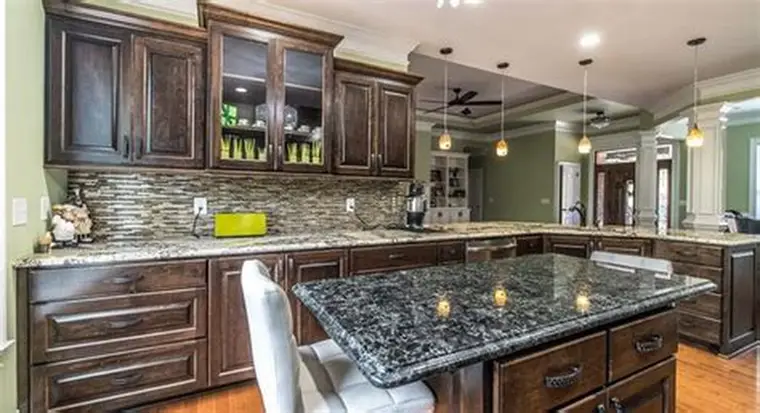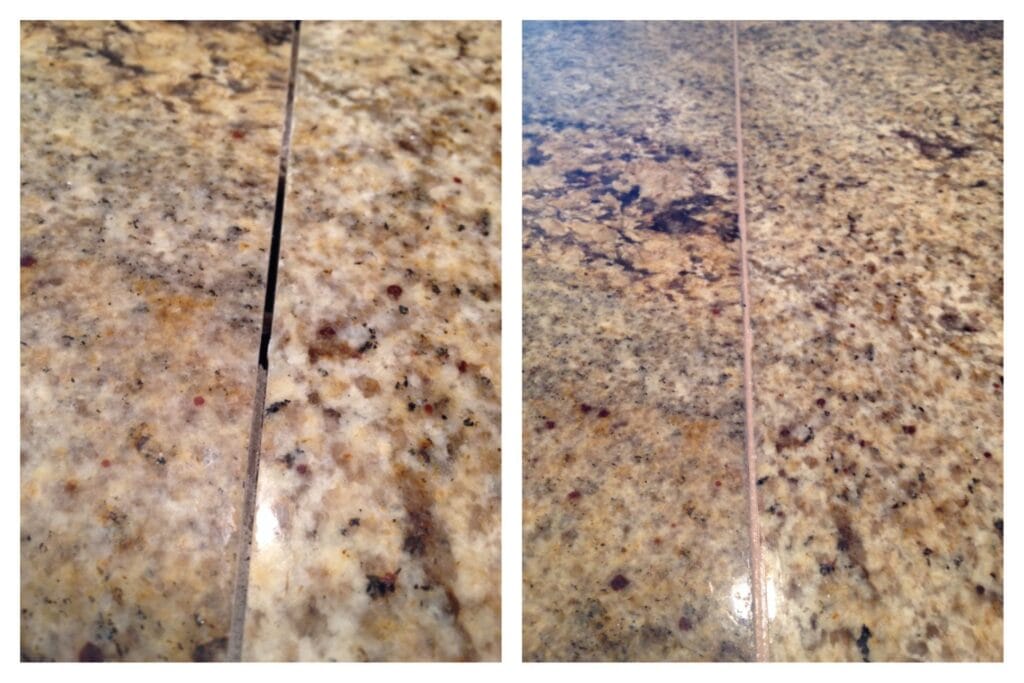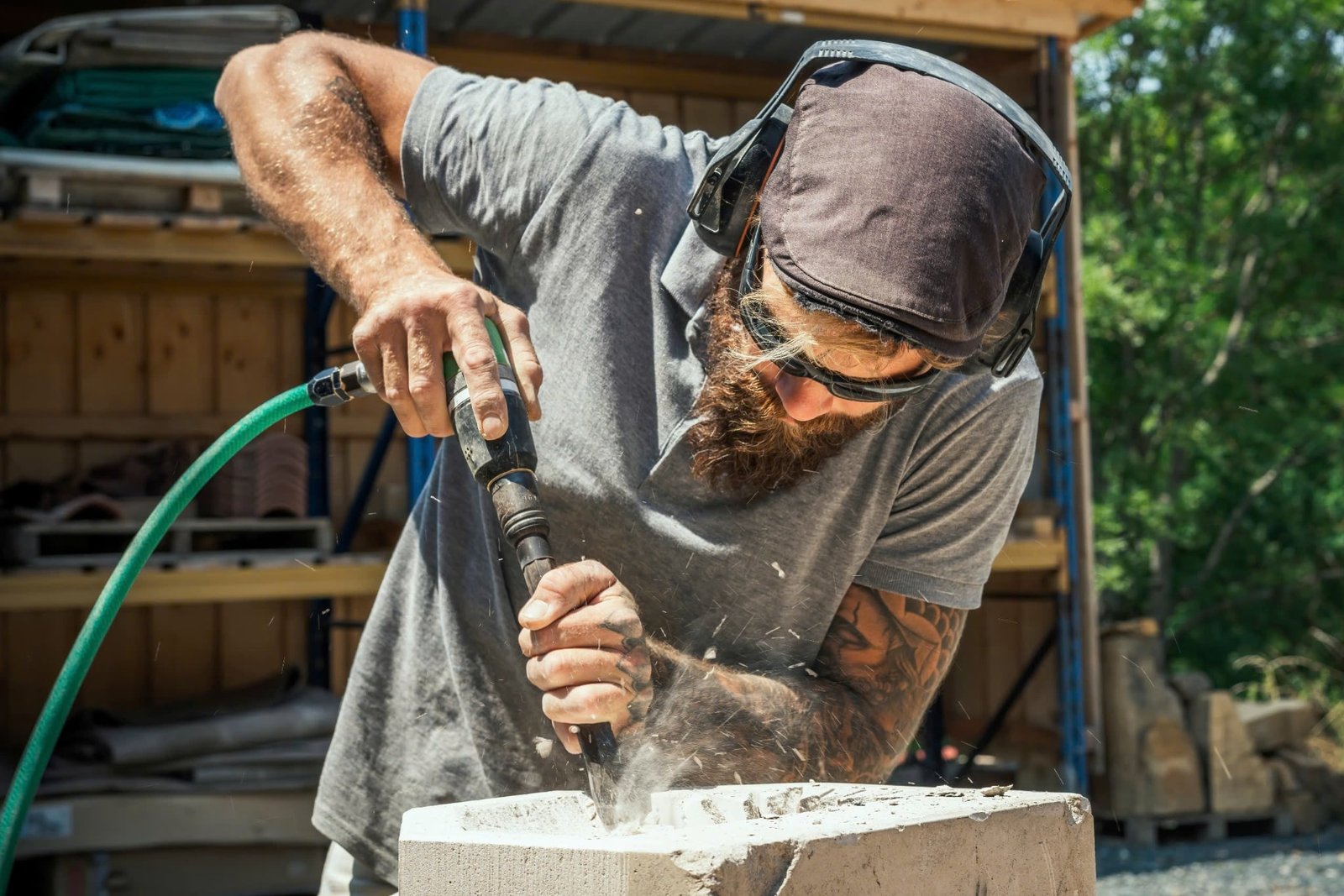
Granite countertops are celebrated for their beauty, durability, and timeless appeal.
Granite countertops are celebrated for their beauty, durability, and timeless appeal. Whether featured in granite kitchen countertops, granite bathroom countertops, or even granite countertops for outdoor kitchens, the surface should showcase a vibrant sheen. Over time, though, that stunning polish can fade, leaving your surface looking dull, worn, or uninviting.
In this comprehensive guide, we’ll explore why dull granite countertops lose their shine, and offer step-by-step instructions—with expert tips—to bring them back to life. Expect a full restoration: staining, polishing, sealing, and maintenance strategies to ensure your stone dazzles year after year.

Why Granite Countertops Become Dull
Granite is a naturally glossy, hard-wearing stone, but it can dull for several reasons:
| Cause | Effect |
|---|---|
| Worn Sealant | A degraded sealant can make polished granite countertops appear foggy. |
| Harsh Cleaners | Acids, alcohols, or abrasives can physically etch or chemically degrade the surface. |
| Mineral Buildup | Hard water or cleaning residues can leave film over black, white, or blue pearl granite countertops. |
| Surface Damage | Pitting, scratches, and micro-chips disrupt light reflection, rendering the finish dull. |
Knowing what specifically dulls your granite is essential to choosing the right restoration approach.

Step-by-Step Guide to Restoring Shine
1. Deep Clean the Surface
Start with a pH-balanced granite cleaner to remove soap scum, grease, and surface residues.
- Liberally spray the countertop.
- Gently wipe with a soft microfiber cloth.
- Rinse with clean water and dry thoroughly.
This step lays the groundwork for more intensive treatments.
2. Remove Mineral Film (If Present)
If the surface still looks hazy after cleaning, dissolved minerals might be the culprit.
- Apply a safe solvent like acetone or a specialized granite cleaner.
- Rub gently with a microfiber towel.
- For persistent spots, use finely crushed granite scrubbers—never abrasive pads.
Streaks and water rings often disappear after mineral film removal.
3. Polish Minor Wear or Etched Areas
For mild fading or etching:
- Use a commercial-level granite polishing compound.
- Apply according to the product’s directions.
- Buff with a machine polisher or by hand until shine returns.
This is the simplest way to bring back luster on brown granite countertops or granite slabs for countertops.
4. Repair Pits and Damage
If your granite has lost polish due to surface damage:
- Read: How to Fix Pitted Granite Countertops?
- Gently fill chips and pits with color-matched epoxy or resin.
- Cure, sand, and polish the area until it blends seamlessly with the surrounding surface.
Effective repair not only enhances appearance but restores structural integrity.
5. Remove Sealer Haze or Over-Sealing
Sometimes dullness is due to sealant residue:
- Lightly reactivate the sealer using a damp sponge or cloth.
- Wipe away residue—do this in small sections.
- Buff each area dry to ensure clarity.
Over-sealing is a common culprit—especially on granite countertops with white cabinets, where haze is obvious.
6. Re-Polish for a Showroom Finish
Once cleaned, repaired, and residue-free:
- Apply a special granite polish or crystallizing sealer.
- Use circular buffing—either by hand or with a low-speed buffer.
- Finish with a clean microfiber cloth.
This final step provides a durable shine suitable for high-end settings like Custom granite countertops or high-traffic granite kitchen countertops.
Essential Maintenance Tips to Retain Shine
After restoration, follow these guidelines:
- Daily cleaning: Use a mild granite cleaner.
- Avoid damaging products: No vinegar, alcohol, bleach, or abrasive pads.
- Protect surfaces: Always use cutting boards and hot pads—granite is heat-resistant, but extreme heat can weaken sealant.
- Reseal annually or when testing stops beading water.
- Wipe spills quickly, especially citrus juices, wine, or oils.
Following these practices preserves the elegance and lifespan of your countertop.
When to Call the Pros
DIY methods work for general dullness, but certain conditions require professional care:
- Extensive etching or discoloration
- Large sections of faded granite
- Deep scratches or structural cracks
Certified stone technicians can expertly restore granite bathroom countertops, oversee sealing, and fix imperfections using professional-grade tools.
Should You Choose Granite or Quartz?
Pros of granite:
- Natural beauty and unique variation
- Excellent heat resistance
- Renewability through scraping, polishing, and sealing
Cons:
- Requires regular sealing
- Can incur dullness if abused
In contrast, quartz countertops are:
- Low-maintenance and non-porous
- Resistant to acidic damage
- Not repairable if damaged—permanent scratches or chips typically require slab replacement
Explore more using: Granite vs quartz countertops.
Summary: Restore Shine, Preserve Value
Restoring fade on affordable granite countertops for modern kitchens involves:
- Deep cleaning
- Mineral film removal
- Polishing & repairing damage
- Buffing to show finish
- Regular, gentle maintenance
Investing time and care helps keep your granite gleaming, whether it’s blue pearl granite, black granite, or white granite countertops. Proper upkeep preserves your investment—enhancing Best granite countertops for kitchens, and maintaining resale appeal.
Related Resources & Tools
- 🪝 Suction cup lifter — helpful for adjusting or handling heavy granite pieces.
- 🔬 Is granite igneous? / Is granite an igneous rock? — learn the science behind granite’s strength and beauty.
- 🛠 How to Fix Pitted Granite Countertops?
- 💧 How to Fix Cloudy Granite Countertops?

